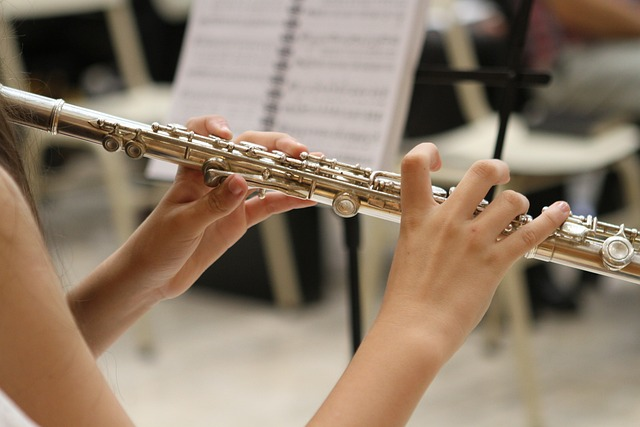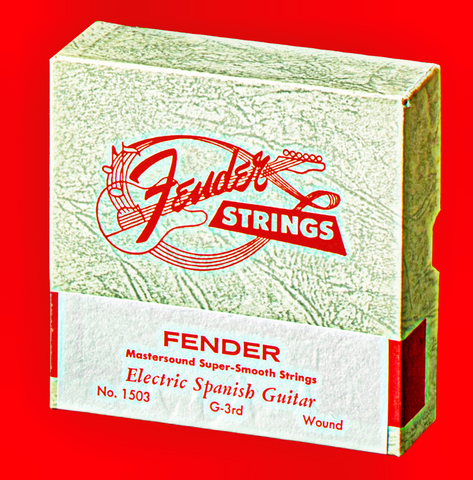What is a Bridge in a Song

Have you ever wondered about the different parts of a song? Have you ever thought to yourself what is a bridge in a song, or why it’s even called a bridge?
If you have read anything about music, you have probably heard about the bridge in a song. If you haven’t heard about a song bridge, the question, “What is a bridge in a song,” continues to linger in your mind. If you are new to musical terms, you don’t need to worry.
In this article, we take a deeper look into the actual meaning of a bridge in a song. We also explore the purpose of a bridge in a song, the tips to create great song bridges for your song, and all other things that relate to song bridges.
Let’s get right into it!
What is a bridge in a song?
Most songs have a verse, chorus, and the bridge section.
The song verse
Verses in your song serve to tell the story that is in your song. What story do you want your song listener to know by listening to your song? This is all masked in the verses of a song.
The word verse is born from the Latin word vertere which simply means to turn. Hence, a song verse is comparable to turning the pages of a storybook.
The song chorus
This is the part of your song that is repeated after each verse. It is usually sung by more than one person.
The song bridge

Picture a real-life bridge like the famous Brooklyn Bridge. Its purpose is simple yet very essential. It simply connects two places separated by the large East River, Manhattan, and Brooklyn.
A bridge in a song serves a similar purpose, connecting two sections of a song. It serves as a musical passage. It is therefore a transitional section connecting sections of your song to add some variation to the song.
To keep your song from feeling repetitive, a bridge can be a creative way to grab your listener’s attention. The song “Good Vibration” by Beach Boys has one of the most famous bridges.
If you have never had a bridge in your song before, you don’t need to feel left out. Not all songs require song bridges.
What is the role of a bridge in a song?
Links two parts of a song
If you have ever written or produced music, you know the challenges that come with this daunting task. Sometimes you struggle so badly to get the perfect melody (If you are struggling in this area, check out this extensive guide to writing a great melody for your song).
Other times, getting the lyrics to your already-found melody is an uphill task (If you are stuck in the lyric-writing stage, check out this ultimate lyric-writing guide). Another challenge in the music-making process is the legal cases that sometimes surround the songwriting process. Ben Meyers has a great piece on avoiding such collaborative issues and you check it out.

All this is part of the music-making process and everyone experiences it at some point in their music-making journey. Another peculiar type of challenge comes when you already have the verses and the chorus, but you can’t seem to find a smooth connection between the two. Any method you try to streamline the two sections comes out sounding awkward.
Well, this is where a bridge comes in. A bridge acts as a smooth connector of song sections. If you are trying to avoid sounding awkward, just try a bridge. The results will astound you.
Therefore, whether you are trying to connect your verse and chorus, or your repetitive chorus and pre-chorus, a bridge is the ultimate solution. It can make your song flow smoothly despite the contrasting characteristics of the song elements you are trying to connect.
Helps to create tension
If your goal is to create a memorable song, then tension and release should form parts of the elements of the song. The tension and release pattern involves the building up of musical intensity in the song followed by a relaxing moment for the listener. Such a pattern creates a sense of satisfaction for the listener.
If your song is built with tension alone, it passes off as boring and a majority of people will not want to listen to it. Similarly, a song composed of release only is very predictable. This also makes it seem very boring and nobody likes to listen to boring music.
However, a nice balance of tension and release is the perfect way to keep people hooked to your song. But how do you achieve this perfect balance? By using a bridge.
A bridge is a perfect place to create tension in your song. It enables you to draw in your listeners. You can then release them into a relaxing section such as a guitar solo or just back into the chorus of the song. In this way, you create a great memorable song that will get everyone jamming to it.
Helps to add diversity
Having your song go back and forth between a verse and a chorus can be predictable and boring. The listener already knows what is next and this may cause them to fall into a lull.
However, if you try adding a song bridge, you can juggle things a bit and thus gain the attention of the listener. The experience of the listener is enhanced and the overall structure of the song surpasses the expectations of the listener.
Amazing Ways To Create An Effective Song Bridge

As noted earlier, not every song requires a bridge. You should ensure your bridge serves a purpose in your song and that it is not randomly placed. However, experiment and judge for yourself whether your song sounds better with a bridge or without it.
The art of writing bridges to a song is similar to the process of creating art. There are no blueprints to be followed but only one’s creativity and imagination. Here are some tips you can consider as you creatively find a way to include a bridge to your song.
1. Consider a new chord progression for your bridge
What is a chord progression?
A chord progression or a chord sequence is the order of the playing of chords in a song. They are the foundational blocks of any song. This progression is subject to your preference. You can make them as long or as short as you want.

Writing a new chord progression for your bridge
An effective bridge in your song is meant to add variety and contrast to your song. What better way to introduce this variety than through a new chord progression? With a different chord progression of chords, the mood is switched up making your song more exciting.
If your song is in a major key, switching to the minor chords in the bridge will provide the much-needed diversity. This new progression of chords presents a window of opportunity to also change the lyrics of your song so that new feelings are elicited in the listener.
You should, however, ensure the new progression ensures a smooth transition with the existing chord progressions. You don’t want your song to sound disoriented and make it unpleasant for your listeners.
2. Consider a new melody for your bridge
The verse and chorus melody

A melody is simply the succession of notes in the song. It forms one of the major elements of a song. A song can have a different melody for the verse and the chorus.
The verse and chorus melodies are, however, highly repetitive. Hence, writing a different melody for your bridge is essential in creating a good bridge.
Writing a new melody for your bridge
This charters a slightly new direction for your song. A new and exciting path that satisfies the listener before taking them back to the repetitive verse and chorus melodies.
You could choose a new instrument such as a keyboard, drum, or guitar for your bridge melody. Each of these can deliver a unique tone and sound.
There is no right or wrong way to create a new melody for your bridge. Just ensure that the melody fits the overall chord progression of your song and transits smoothly into the next section.
3. Consider new lyrics for your bridge

Variety and diversity in your bridge can also be achieved through new lyrics. Do you wish to enhance the emotional response of the lyrics in your song? If so, then new bridge lyrics can help you to do so.
You can write new lyrics that give a new perspective on the story narrated through the verses in your song. You can offer clarity on points that did not come out clearly in the chorus lyrics. The new lyrics can also serve as a platform to express certain emotions that may not have been clearly expressed in the verse lyrics.
By trying these new lyrics, the contrast in your bridge will come out very clearly and the emotional impact in your lyrics will be reinforced.
4. Consider the perfect placement for your bridge
If you misplace the bridge in your song, chances are, the song will sound disoriented and boring. Who wants to listen to a disoriented and boring song?
Therefore, it is necessary to determine where the bridge fits perfectly into your overall song. To do this, you can begin by identifying the elements of your song. Do you have verses, a chorus, a second chorus, a pre-chorus, an intro, or an outro?
After this, identify the pattern of your song and where the musical bridge is likely to fit best. For example, if your song follows a pattern where there is a chorus and a pre-chorus, you can use a great bridge to smoothly transition from the chorus to the pre-chorus. Another example is where a song follows the Verse-Chorus-Verse-Chorus-Bridge-Chorus song structure. Here there is one extra final chorus. The bridge connects one chorus to the final chorus eliminating the redundancy created by the second chorus.
5. Consider a new instrument for your bridge

As indicated earlier, diversity is required for a perfect bridge. A instrument can be such a great way to add variety to your bridge. The variation of instruments adds a great element of surprise to your listener thus intriguing them and capturing their attention.
If your song is primarily made from a piano, you could make use of a flute or guitar in your bridge. You can also feature an instrumental solo such as a guitar solo as this is a popular trend among artists. The instrument can help you to build tension and to add a heightened sense of energy.
Experimentation is still key in building the perfect bridge. Try out different instruments and find the one that fits perfectly into your song. You are not limited in the choice of instruments so utilize your freedom and creativity.
6. Consider a new tempo for your bridge
You can add contrast and variety to your song through a change in the tempo of the song. You can simply shift the energy levels with a new tempo that is different from the chorus and verse tempo.
However, you need to take great caution with this technique. Have you ever listened to a Disk Jockey (DJ) who performed a poor transition between two songs because of different tempos? If you have, you know how frustrating and confusing it can leave you as the listener.
In a similar manner, it is quite easy to confuse a listener who is flowing to the beat of the song if you change the tempo. A listener may end up feeling confused which is something you do not want. Hence, employ caution when using this technique and make sure your bridge transitions to the original tempo seamlessly.
7. Consider a simple bridge without overthinking
After reading about the benefits of having a bridge in your song, you may feel unnecessary pressure to create a good bridge. In the process, you may end up overthinking and destroying what was meant to be a great addition to your song.
The simplest ideas often turn out to be the greatest. Therefore, keep it simple and do not go far and beyond with the changes in your bridge.
Study Music Online With Elevate
There’s no better way to learn the art of song writing than through an online course. Whether you are a beginner, intermediate, or advanced music writer, the Online song writing Courses offered by Elevate will boost you to your next level of greatness. These in-depth courses are led by industry experts and you can do any of them from the comfort of your home.
The course Songwriting: The Basics will take you through the basics of the songwriting process, music theory and musical ideas from pop music to country, leaving you with a deeper understanding of what makes up a good song. What’s more, you can explore the course at your pace as it offers great flexibility.
Song writing is a learned skill. Even the best songwriters spend time learning in order to master this skill. You should definitely try Elevate as their songwriting courses can help you make a name for yourself in the music industry.
From the blog

Rockstars in Training: The Best Kids’ Electric Guitars for 2024

Redefining Your Riffs: How Electric Guitar Strings Shape Your Sound


